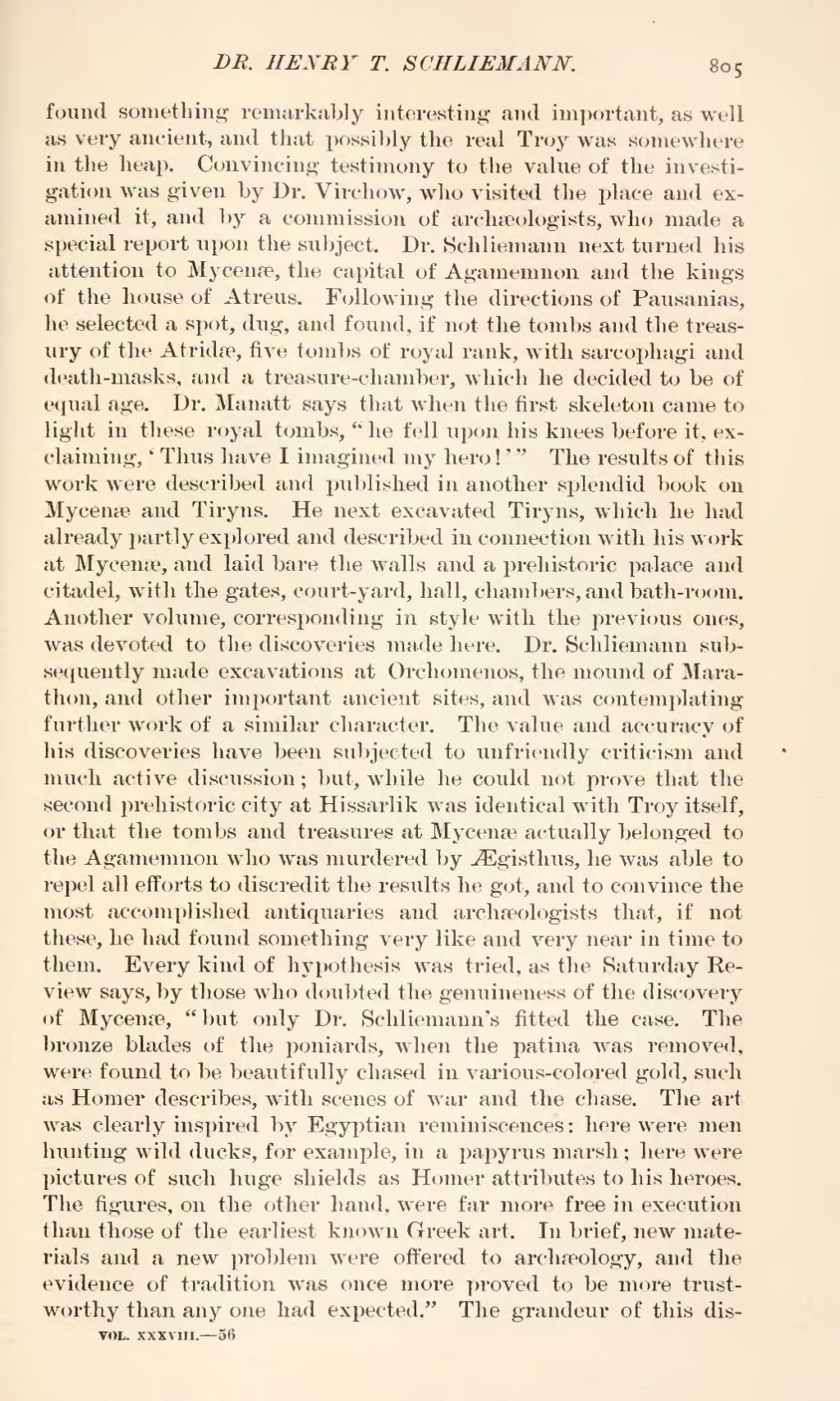found something remarkably interesting and important, as well as very ancient, and that possibly the real Troy was somewhere in the heap. Convincing testimony to the value of the investigation was given by Dr. Virchow, who visited the place and examined it, and by a commission of archæologists, who made a special report upon the subject. Dr. Schliemann next turned his attention to Mycenæ, the capital of Agamemnon and the kings of the house of Atreus. Following the directions of Pausanias, he selected a spot, dug, and found, if not the tombs and the treasury of the Atridæ, five tombs of royal rank, with sarcophagi and death-masks, and a treasure-chamber, which he decided to be of equal age. Dr. Manatt says that when the first skeleton came to light in these royal tombs, "he fell upon his knees before it, exclaiming, 'Thus have I imagined my hero!'" The results of this work were described and published in another splendid book on Mycenæ and Tiryns. He next excavated Tiryns, which he had already partly explored and described in connection with his work at Mycenæ, and laid bare the walls and a prehistoric palace and citadel, with the gates, court-yard, hall, chambers, and bath-room. Another volume, corresponding in style with the previous ones, was devoted to the discoveries made here. Dr. Schliemann subsequently made excavations at Orchomenos, the mound of Marathon, and other important ancient sites, and was contemplating further work of a similar character. The value and accuracy of his discoveries have been subjected to unfriendly criticism and much active discussion; but, while he could not prove that the second prehistoric city at Hissarlik was identical with Troy itself, or that the tombs and treasures at Mycenæ actually belonged to the Agamemnon who was murdered by Ægisthus, he was able to repel all efforts to discredit the results he got, and to convince the most accomplished antiquaries and archaeologists that, if not these, he had found something very like and very near in time to them. Every kind of hypothesis was tried, as the Saturday Review says, by those who doubted the genuineness of the discovery of Mycenæ, "but only Dr. Schliemann's fitted the case. The bronze blades of the poniards, when the patina was removed, were found to be beautifully chased in various-colored gold, such as Homer describes, with scenes of war and the chase. The art was clearly inspired by Egyptian reminiscences: here were men hunting wild ducks, for example, in a papyrus marsh; here were pictures of such huge shields as Homer attributes to his heroes. The figures, on the other hand, were far more free in execution than those of the earliest known Greek art. In brief, new materials and a new problem were offered to archæology, and the evidence of tradition was once more proved to be more trustworthy than any one had expected." The grandeur of this dis-
